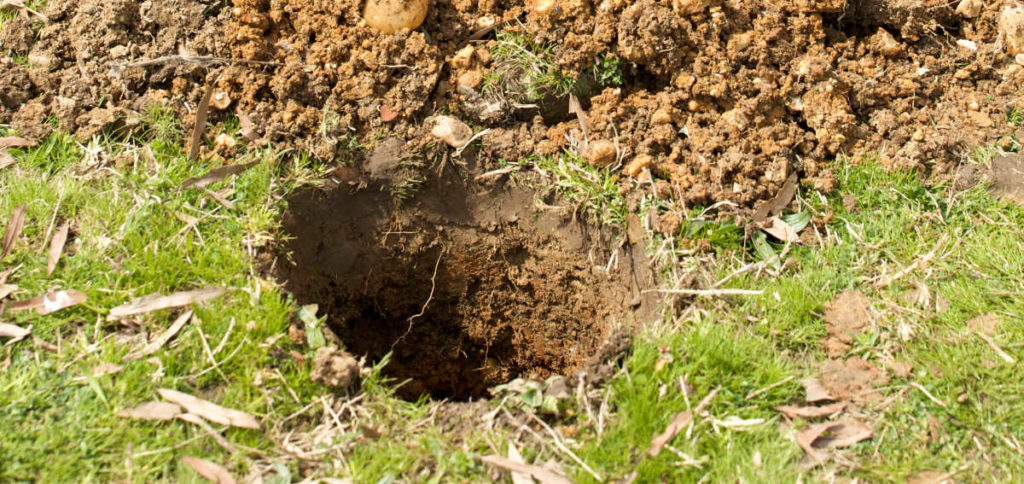Last Updated on March 25, 2024 by Editors
If you’re new to the world of digging and feel ready to take on your first holes, it can help to learn some important things about digging bars. The last thing you want to have to happen when you dig a deep and narrow hole is to find rocks or thick roots that your digging or other tools cannot reach to move or cut. Or even worse an undiggable obstacle. The garden hand tools you need to tackle these problems are the digging bars.
Table of Contents
What is a digging bar?
A dig bar looks like a long, straight, and heavy metal bar to dig holes. Generally, this manual tool is a solid unit, with an all-steel construction. Typically, the steel is carbon steel. Each end of the digging bar tool is different than the other and serves a different purpose. Generally, this hand tool is one of the best digging tools you can have in a storage shed.
Where to use digging bars
The digger bar has an easy-to-use design. You can use it to loosen soil and will help you dig holes for planting your favorite trees. Even if it is a great tool for general use in your garden, you can use it in every outdoor space. Do you need to dig post holes in your yard or deck footings for your new deck? They are able to dig deep, cut any roots and pulverize rocks. Do you have ice in your walkways or driveway? They will break it. Do you want to install a flagpole in your lawn area? They can help you with digging its hole.

Uses of digging bars
There are numerous benefits to using digging bars over other digging tools. For Instance, when your digging tool cannot get through heavy clay, rocks and tree roots the digging bars can. A digging bar can cut through rocks and dislodge or break them. Moreover, the bar for digging can break concrete and ice. A digging bar can make loosening hard soil so much easier than using another hand tool for digging. With a dig bar tool, all you need to do is use its appropriate end. It will loosen hard clay soil and break packed dirt.
However, the biggest benefit of the digging bar is its shape. It is a thin, heavy, and very long digging tool. This shape makes it the perfect companion for a post hole digger or a manual auger. When you dig holes for posts you make them deep and narrow. If these holes are rather narrow and very deep you cannot use another tool to cut or chop roots and move stones. With a digging bar, you can do these quickly and effectively.
Another good use of the digger bars is that some of them can be used as hand tampers. For the reasons mentioned before, a hand tamper cannot reach the bottom of a hole to pack down the soil, gravel, or other material. If you use the tamping type of digging bars you can do it.
Digging bars for prying? Hell no!
Digging bars as their name suggests are tools for digging. You can use them to move material or dislodge rocks but they are not designed for prying. A common mistake that many folks make is to use the digger bars to pry and lever heavy objects. In this case, the bar will fail. It might bend easily and of course, it will not snap back. Digging bars are fairly good tools to use to move or pry light objects. However, if you have to pry heavy objects, then it is better to use more specialized tools like crowbars or pry bars.
Types of digging bars
There are many different types of digging bars on the market, but they all have one thing in common – they’re designed to help you dig deeper holes. If you’re looking for a tool that can help you tackle those tough jobs, then this hand tool is a great option.
So which is right for you? If you prefer a bar to pack down dirt, a tamper bar is probably the way to go. While it is true that there are many different types available in the market, it should not be too difficult to choose the one that is right for you. Below are the two common types that you will find in most stores:
1. Tamping bars
These bars are tamping and cutting bars. The tamping bars have an end that is a chisel. The chisel is a sharpened blade and is the end that you use to dig and break soil. In addition, you can use this cutting edge when you have to cut roots or break rocks. The other end is a rounded, tamping flat surface. As the name of this type of digging bar suggests you can use the tamping end to pack down soil or other granular materials.
The tamper bars are better than hand tampers when you have to compact soil at spot areas. An example of this is the post holes. These holes are very narrow and deep. The tamper bar is the best tool to tamp the bottom of a post hole or tamp a refilled post hole. For this reason, tamping bars are sometimes called post hole digger bars. Typically, they are heavy-duty digging bars.
Another benefit of the tamping end is that you can use a sledgehammer to strike it and provide more force to help the other end to cut very strong tree roots or obliterate rocks.
2. San Angelo bars
San Angelo bars have a chisel or a wedge end. Unlike tamping bars, the other end is a pencil point (a round point tip) or a diamond point. Whether it is a diamond or a pencil point digging bar, the pointed end is better than the chisel or wedge to probe around a rock.
Also, both are great to break rocks and hard soil. The applied force to the tool concentrates at the pointed end, thus making it greater than chisel or wedge ends to break rock or very tough soil. Typically, in the market, you will find San Angelo bars with cylindrical or hexagonal-shaped shafts.
Other buying considerations for digger bars
When shopping for a digger bar there are some more things to consider. How heavy do you want it to be? Do you need it to have a tamping end to pack down soil? Do you want a very long bar for digging or a shorter one?
General dimensions
Their length varies from 40 to 73 inches, however, most of them are about 5 to 6 feet long. Typically, the shaft is 1 inch thick in diameter in the case it is a cylindrical one or 1 inch wide if the shape of the shaft is hexagonal. The shorter bars are great for general gardening. The longer ones are better for digging deep holes or reaching inside them to remove rocks or chop roots.
End dimensions
The tamping end is approximately 2 to 3 inches in diameter. The chisel or wedge ends are 2 to 3 inches wide. These three ends are the wider parts of a digging bar.
Digging bar weight
You will find in the market steel digging bars and, rarely though, a combination of steel and fiberglass digging bars that weigh from 7 to 17 or more pounds. Usually, the long digging bars weigh a lot more than the others. The best digging bars tend to be weighty. However, it is important to make sure that you are comfortable with the weight of this digging tool.
How to use a digging bar
There is nothing special about how to use the digging bar tools as long as you do not use them for levering and prying large, heavy objects. Use their tamping head for tamping, the pointy ends for breaking soil and probing and the wedge or chisel end to chop and cut. Digging bars are very effective, but extremely simple tools. However, two things are certain and you should always have them in mind. Do not use them to pry heavy objects and, most importantly, wear leather gloves.
How to maintain a bar for digging
Clean the digger bar from dirt and dry it with a cloth. Almost all dig bars are made of carbon steel. Unfortunately, it is steel that is not rust-resistant. Some digging bar tools have some protective coating. However, this will wear off after some time. You should oil your digging bar often to protect it from rusting.
Store the digging tool in a dry and safe place away from the kids’ reach. The good thing about bars for digging is that they can be stored even in a tight space.
How to sharpen a digging bar
Most digging bars have a chisel end. Typically, you use that for chopping roots. For this reason, you have to sharpen it a bit because it needs to be sharp. To sharpen a digging bar, you will need a file or grinder. Start by cleaning the bar to remove any dirt or debris. Next, use the file or grinder to remove any burrs or roughness from the edges of the bar. Finally, use a sharpening stone to give the bar a nice, sharp edge. Remove any metal remains and oil it.
In summary
A digging bar is a great tool to have around the house for various jobs. Whether it be for gardening, construction, or for any other purpose, this hand tool will get the job done.
Digging bars are a little less common than a shovel or a pick axe, so they can be a bit of a mystery to new homeowners. But once you’ve used one, you’ll wonder why you hadn’t used it sooner.
As an Amazon Associate I earn from qualifying purchases. We may get commissions for purchases made through links in this post.

